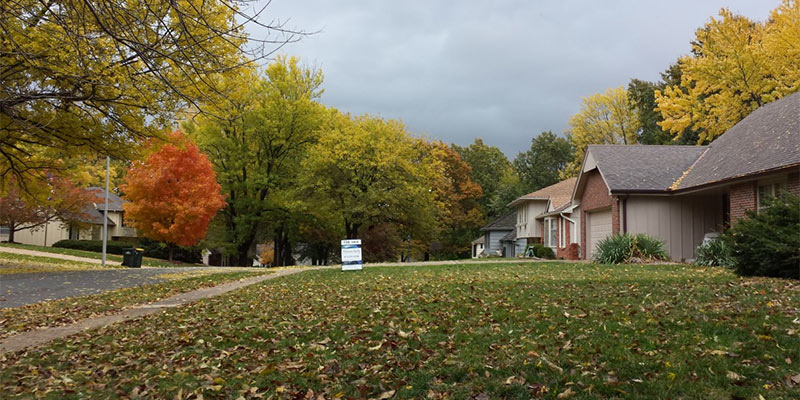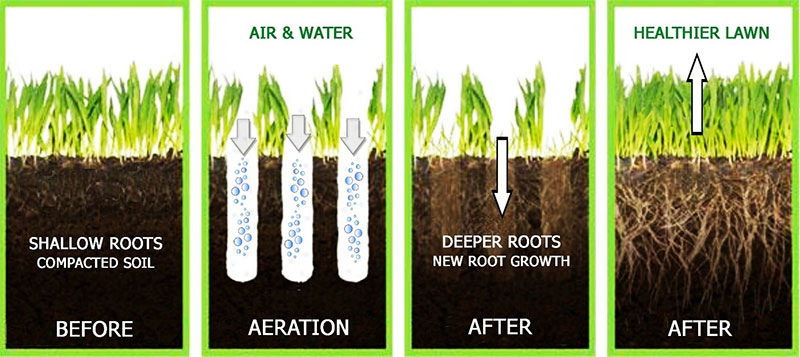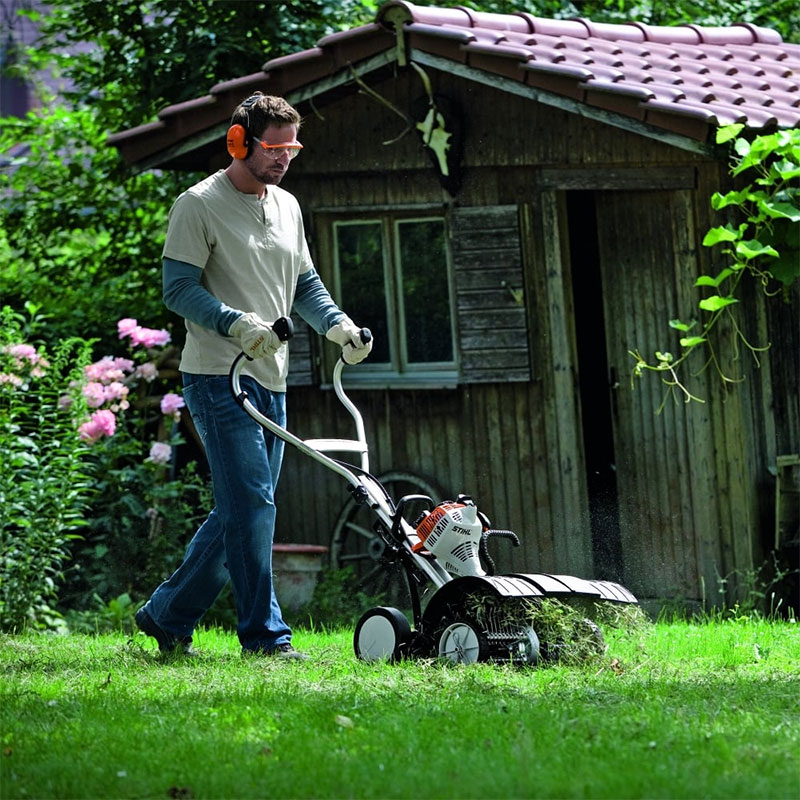
We’ve all used our lawns a lot over the past few months, and it’s had a lot to contend with – sun and drought, too much rain, big and little feet running all over it – all manner of elements that will have depleted it and put it to the test. To use them as our very own outdoor carpet is the reason we have lawns, but that means at the end of summer we have to look after them!
Autumn’s the perfect time to put all its problems right, as the season has ended and we’re tidying up our gardens. Any work you do to your lawn now will hopefully take effect before winter rains and temperatures descend. One of the key jobs to do now is aerate your lawn, so it can not only drain well and cope with the onslaught of rain, but also keep the soil airy and non-compacted. Cloggy lawn soil is the root of many fungal or drainage problems and is generally the cause of it appearing unattractive.
For a nice and tidy look, rake moss and leaves from the surface, and if you need to rectify certain areas that look poor over summer, you can re-seed or even re-turf, which will knit together handsomely before winter. Here are more tips for caring for your lawn this autumn:
Aerating
The soil in your lawn will become compact over time, and this gets worse each time you walk on it. When the soil becomes compact, it means that it will hold less water and air, leading to poor growth of grass, which translates to increase in moss and weed problem. Aeration makes your lawn healthier and eliminates these problems. The most common method used to aerate soil is spiking using a garden fork or lawn aerator shoes. However, this method works best if your garden soil has sandy particles. Otherwise, use a tiny, hollow aerator
Remove thatch
Weeds, grass clippings, moss and other debris usually form a thick mat on the surface of the soil. This mat is known as thatch, and prevents the soil from breathing properly, encourages spread of disease and stops water from reaching the soil.
To remove the thatch, you will need to use a tined rake to scratch the surface of the lawn. Take the thatch to a compost pit. When you remove the thatch, grass will become healthier and spread their side roots. If you have a large lawn, use a lawn dethatcher.
Improve drainage
Lawns that have been compacted as a result of heavy traffic during the summer could lead to drainage problems, which could translate to the growth of moss. You can take care of this by plunging a garden fork in your lawn as deep as it can go and repeat the same at 10cm intervals for the lawns. Or you could use wheeled spiking machine. Use a broom to work the mixed sandy top dressing.
Add fertiliser
Fertilising your lawn is one of the most important things that you will need to do during autumn. You should however avoid adding the old fertiliser. You need to use a fertiliser which contains a high amount of potassium and phosphorous instead of an organic one. Phosphorous stimulates the growth of grass and increase its hardiness in winter. This will protect the grass from suffering from the stressful environment. Potassium reduces transpiring from the leaves, so the grass does not need a lot of water if it has enough supply of potassium. It also helps the grass to withstand the cold winter.
Seed the lawn
The temperature of your lawn soil is likely to reach 550F during autumn. As a matter of fact, winter and autumn are the best times for turf roots to flourish. This is the best time to seed. The inexpensive seed usually has weeds seeds which usually die when frost comes. For this reason, it is important that you purchase a high price one because of its high resistance to disease, insects and drought. After sowing your seeds, water them every day to give them just the right amount of moisture to germinate and grow. Grass usually takes about 10-20 days to grow.
Caring for your lawn during autumn is very important as it helps to make the grass healthy and withstand diseases. This is also the right time to add fertilizer and sow some seeds.


